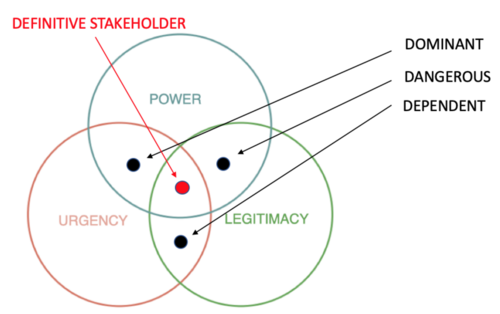Example APPPM 2020
From apppm
(Difference between revisions)
(→Collection of tools) |
|||
| Line 15: | Line 15: | ||
<ref>Project Management Institute, Inc.. (2017). ''Guide to the Project Management Body of Knowledge (PMBOK® Guide) (6th Edition)''. (pp. 513). Project Management Institute, Inc. (PMI). Retrieved from | <ref>Project Management Institute, Inc.. (2017). ''Guide to the Project Management Body of Knowledge (PMBOK® Guide) (6th Edition)''. (pp. 513). Project Management Institute, Inc. (PMI). Retrieved from | ||
https://app-knovel-com.proxy.findit.dtu.dk/web/view/khtml/show.v/rcid:kpGPMBKP02/cid:kt011DXO32/viewerType:khtml//root_slug:13-project-stakeholder-management/url_slug:project-stakeholder-management?kpromoter=federation&b-toc-cid=kpGPMBKP02&b-toc-root-slug=&b-toc-url-slug=project-stakeholder-management&b-toc-title=Guide%20to%20the%20Project%20Management%20Body%20of%20Knowledge%20(PMBOK%C2%AE%20Guide)%20(6th%20Edition)&page=11&view=collapsed&zoom=1</ref> | https://app-knovel-com.proxy.findit.dtu.dk/web/view/khtml/show.v/rcid:kpGPMBKP02/cid:kt011DXO32/viewerType:khtml//root_slug:13-project-stakeholder-management/url_slug:project-stakeholder-management?kpromoter=federation&b-toc-cid=kpGPMBKP02&b-toc-root-slug=&b-toc-url-slug=project-stakeholder-management&b-toc-title=Guide%20to%20the%20Project%20Management%20Body%20of%20Knowledge%20(PMBOK%C2%AE%20Guide)%20(6th%20Edition)&page=11&view=collapsed&zoom=1</ref> | ||
| + | |||
| + | |||
| + | '''Service Blueprinting''' <ref>(2007) Mary Jo Bitner, Amy L. Ostrom, Felicia N. Morgan, Service Blueprinting: A Practical Tool for Service Innovation, Centre for Services Leadership, Arizona State University, paper</ref> | ||
| + | |||
| + | '''Salience Model by PMI ''' <ref>Project Management Institute, Inc.. (2017). ''Guide to the Project Management Body of Knowledge (PMBOK® Guide) (6th Edition)''. (pp. 513). Project Management Institute, Inc. (PMI). Retrieved from https://servicedesigntools.org/tools/service-blueprint</ref> | ||
| + | |||
| + | A service blueprint is a diagram that displays the entire process of service delivery, by listing all the activities that happen at each stage, performed by the different roles involved. The service blueprint is built by first listing all the actors involved in the service process on a vertical axis, and all the steps required to deliver the service on the horizontal axis. The resulting matrix allows to represent the flow of actions that each role needs to perform along the process, highlighting the actions that the user can see (above the line of visibility) and the ones that happen in the back-office (below the line of visibility). Roles can be performed by human beings or other types of entities (organizations, departments, artificial intelligences, machines, etc.) | ||
| + | |||
| + | |||
| + | [[File: Stakeholder123.png |500px|thumb|center|Figure 1: Salience Model Representing the Importance of Different Stakeholders<ref name="Salience"> Ronald K. Mitchell, Bradley R. Agle, Donna J. Wood. ''The Academy of Management Review'', Vol. 22, No. 4, 1997, p872 </ref> ]] | ||
| + | |||
| + | <!--'''PMI on Salience Model ''' | ||
| + | <ref>Project Management Institute, Inc.. (2017). ''Guide to the Project Management Body of Knowledge (PMBOK® Guide) (6th Edition)''. (pp. 513). Project Management Institute, Inc. (PMI). Retrieved from | ||
| + | https://app-knovel-com.proxy.findit.dtu.dk/web/view/khtml/show.v/rcid:kpGPMBKP02/cid:kt011DXO32/viewerType:khtml//root_slug:13-project-stakeholder-management/url_slug:project-stakeholder-management?kpromoter=federation&b-toc-cid=kpGPMBKP02&b-toc-root-slug=&b-toc-url-slug=project-stakeholder-management&b-toc-title=Guide%20to%20the%20Project%20Management%20Body%20of%20Knowledge%20(PMBOK%C2%AE%20Guide)%20(6th%20Edition)&page=11&view=collapsed&zoom=1</ref> | ||
| + | |||
| + | |||
| + | |||
| + | |||
| + | |||
| + | |||
| + | |||
* What is the focus of the reference? | * What is the focus of the reference? | ||
* What are the limitations of the reference? | * What are the limitations of the reference? | ||
| Line 36: | Line 57: | ||
''Project Canvas on Salience Model '' | ''Project Canvas on Salience Model '' | ||
<ref> DTU ProjectLab, ''Project Canvas''. Retrieved from https://www.doing-projects.org/resources/projectcanvas </ref>--> | <ref> DTU ProjectLab, ''Project Canvas''. Retrieved from https://www.doing-projects.org/resources/projectcanvas </ref>--> | ||
| − | |||
| − | |||
| − | |||
| − | |||
==References== | ==References== | ||
<references /> | <references /> | ||
Revision as of 19:30, 24 February 2020
Collection of tools
Salience Model by PMI [1]
Salience Model is a tool used to classify relevant stakeholders, with the aim of monitoring stakeholder management. This classification is based on assessments of their power, urgency, and legitimacy. The Salience Model is useful for projects, programs or portfolios with a large complex number of stakeholders or if complex networks of relationships have to be monitored. It is also useful in determining the relative importance of the identified stakeholders.

Figure 1: Salience Model Representing the Importance of Different Stakeholders[2]
References
- ↑ Project Management Institute, Inc.. (2017). Guide to the Project Management Body of Knowledge (PMBOK® Guide) (6th Edition). (pp. 513). Project Management Institute, Inc. (PMI). Retrieved from https://app-knovel-com.proxy.findit.dtu.dk/web/view/khtml/show.v/rcid:kpGPMBKP02/cid:kt011DXO32/viewerType:khtml//root_slug:13-project-stakeholder-management/url_slug:project-stakeholder-management?kpromoter=federation&b-toc-cid=kpGPMBKP02&b-toc-root-slug=&b-toc-url-slug=project-stakeholder-management&b-toc-title=Guide%20to%20the%20Project%20Management%20Body%20of%20Knowledge%20(PMBOK%C2%AE%20Guide)%20(6th%20Edition)&page=11&view=collapsed&zoom=1
- ↑ Ronald K. Mitchell, Bradley R. Agle, Donna J. Wood. The Academy of Management Review, Vol. 22, No. 4, 1997, p872